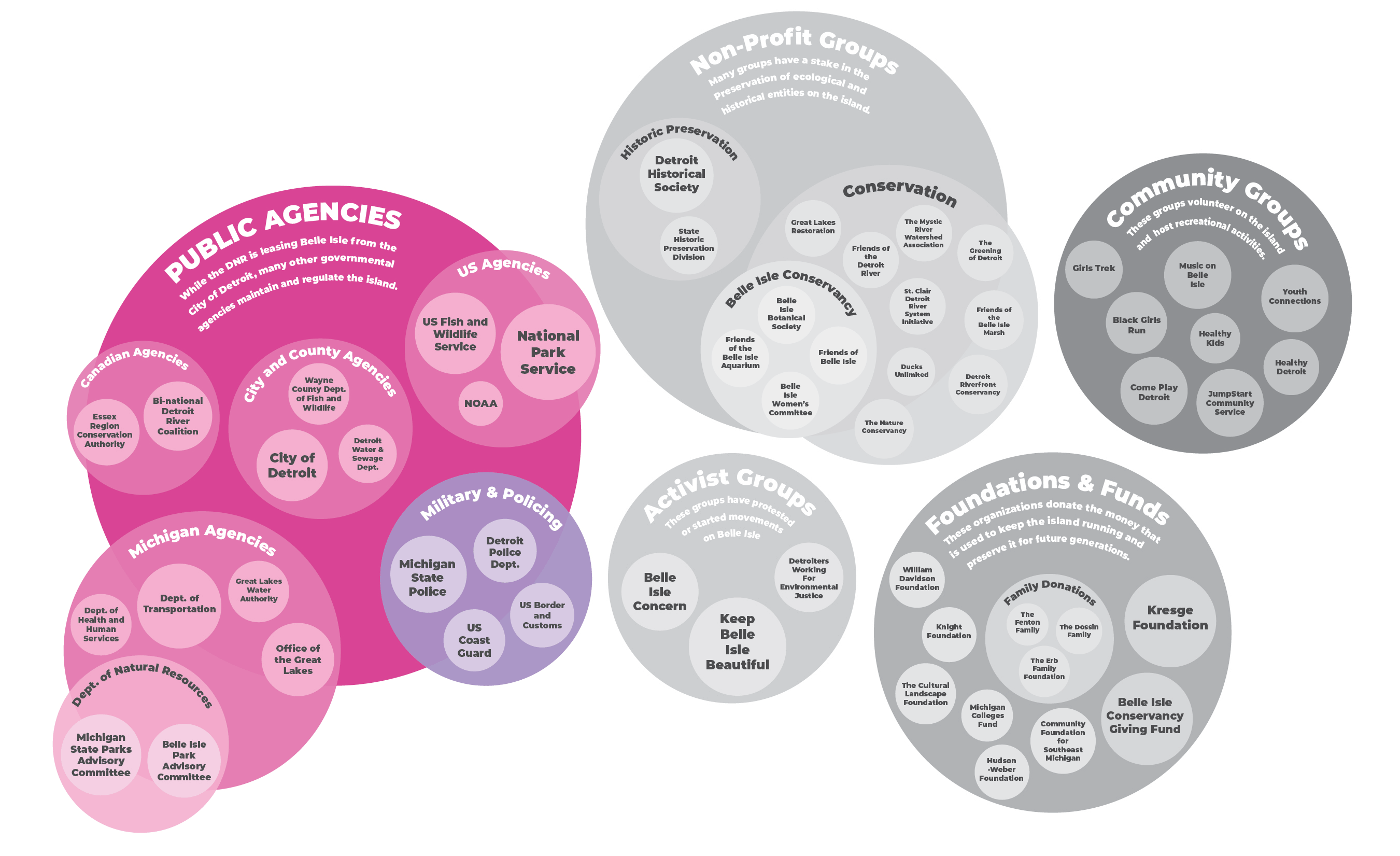
Belle Isle’s regimes of occupation, ownership, and management have a long history of controversy and violence. From the indigenous peoples that once inhabited the island, to its private holders, to the nested scales of municipal, state, and federal level government presence today, it is apparent Belle Isle cannot be rendered as a neutral space. Each time the island exchanges hands, its image evolves and in part influences who visits the park. With its current lease by the Michigan DNR from the City of Detroit, this debate continues.
While some visitors note the improved maintenance and safety, others feel uncomfortable in a sterile, heavily policed environment. Together with the State of Michigan imposing entry fees and leading efforts for ecological restoration, private nonprofits and private organizations like the Conservancy and the Yacht Club manage and program large stretches within the island. As we look to the future, how can this disparate network of actors steward a sense of inclusiveness and belonging for all Detroiters? How will the island evolve during this period of state-led leadership? What will happen to Belle Isle after the DNR lease ends?
This website breaks down the governance of Belle Isle into 5 categories: Public Agencies, Non-Profit Groups, Foundations and Funds, Community Groups, and Activist Groups. While this is not an exhaustive list, the organizations listed on these pages start to give a sense of who has stake in the island. Where do you see yourself in this list (if at all) and where can you find your own sense of agency on Belle Isle?
